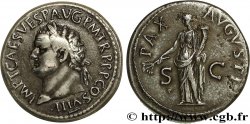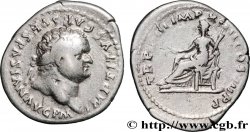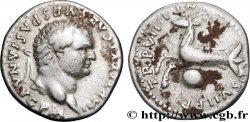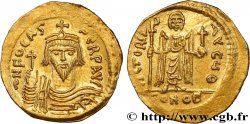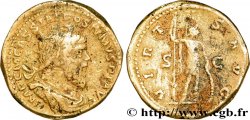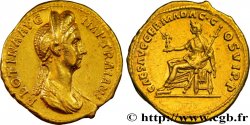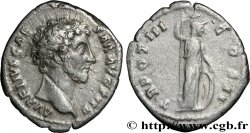You must signin and be an approved bidder to bid, LOGIN TO BID. Accounts are subject to approval and the approval process takes place within 48 hours. Do not wait until the day a sale closes to register. Clicking on "BID" constitutes acceptance of the terms of use of cgb.fr private live auctions.
Bids must be placed in whole Euro amounts only. The sale will start closing at the time stated on the item description; any bids received at the site after the closing time will not be executed. Transmission times may vary and bids could be rejected if you wait until the last second. For further information check the Live auction FAQ
All winning bids are subject to a 18% buyer’s fee.
All winning bids are subject to a 18% buyer’s fee.
| Estimate : | 800 € |
| Price : | 632 € |
| Maximum bid : | 650 € |
| End of the sale : | 03 June 2025 14:52:19 |
| bidders : | 6 bidders |
Type : Sesterce
Date: 80-81
Mint name / Town : Bithynie ou Thrace
Metal : copper
Diameter : 34,5 mm
Orientation dies : 6 h.
Weight : 24,74 g.
Rarity : R2
Coments on the condition:
Monnaie centrée des deux côtés. Joli portrait de Titus ainsi qu’un revers bien venu à la frappe. Patine marron foncé
Catalogue references :
Obverse
Obverse legend : IMP T CAES DIVI VESP F AVG P M TR P COS VIII.
Obverse description : Tête laurée de Titus à droite (O*).
Obverse translation : “Imperator Titus Cæsar Divi Vespasianus Filius Augustus Pontifex Maximus Tribunicia Potestate Consul octavum”, (L’empereur Titus césar fils du divin Vespasien auguste, grand pontife, revêtu de la puissance tribunitienne, consul pour la huitième fois).
Reverse
Reverse legend : PAX - AVGVST/ S|C.
Reverse description : Pax (la Paix) drapée, debout à gauche, tenant un caducée de la main gauche et une branche d’olivier de la main droite.
Reverse translation : “Pax Augusti”, (La Paix de l’auguste).
Commentary
Ce type est très rare et a été successivement attribué à Lyon, un atelier bithynien et un atelier thrace. Les auteurs du Roman Provincial Coinage ont recensé 39 exemplaires. Ce type est souvent mal classé, parfois attribué à Rome. Ce type serait frappé après la divinisation de Vespasien en 80 et après les émissions de restitution. Ruban de type 3. Titus reçoit son huitième consulat le 1er janvier 80, alors que Domitien prend son septième.
This type is very rare and was successively attributed to Lyon, a Bithynian workshop and a Thracian workshop. The authors of the Roman Provincial Coinage have identified 39 examples. This type is often misclassified, sometimes attributed to Rome. This type would be struck after the divinization of Vespasian in 80 and after the restitution issues. Type 3 ribbon. Titus receives his eighth consulship on January 1, 80, while Domitian takes his seventh
This type is very rare and was successively attributed to Lyon, a Bithynian workshop and a Thracian workshop. The authors of the Roman Provincial Coinage have identified 39 examples. This type is often misclassified, sometimes attributed to Rome. This type would be struck after the divinization of Vespasian in 80 and after the restitution issues. Type 3 ribbon. Titus receives his eighth consulship on January 1, 80, while Domitian takes his seventh








 Report a mistake
Report a mistake Print the page
Print the page Share my selection
Share my selection Ask a question
Ask a question Consign / sell
Consign / sell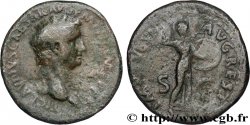
 Full data
Full data